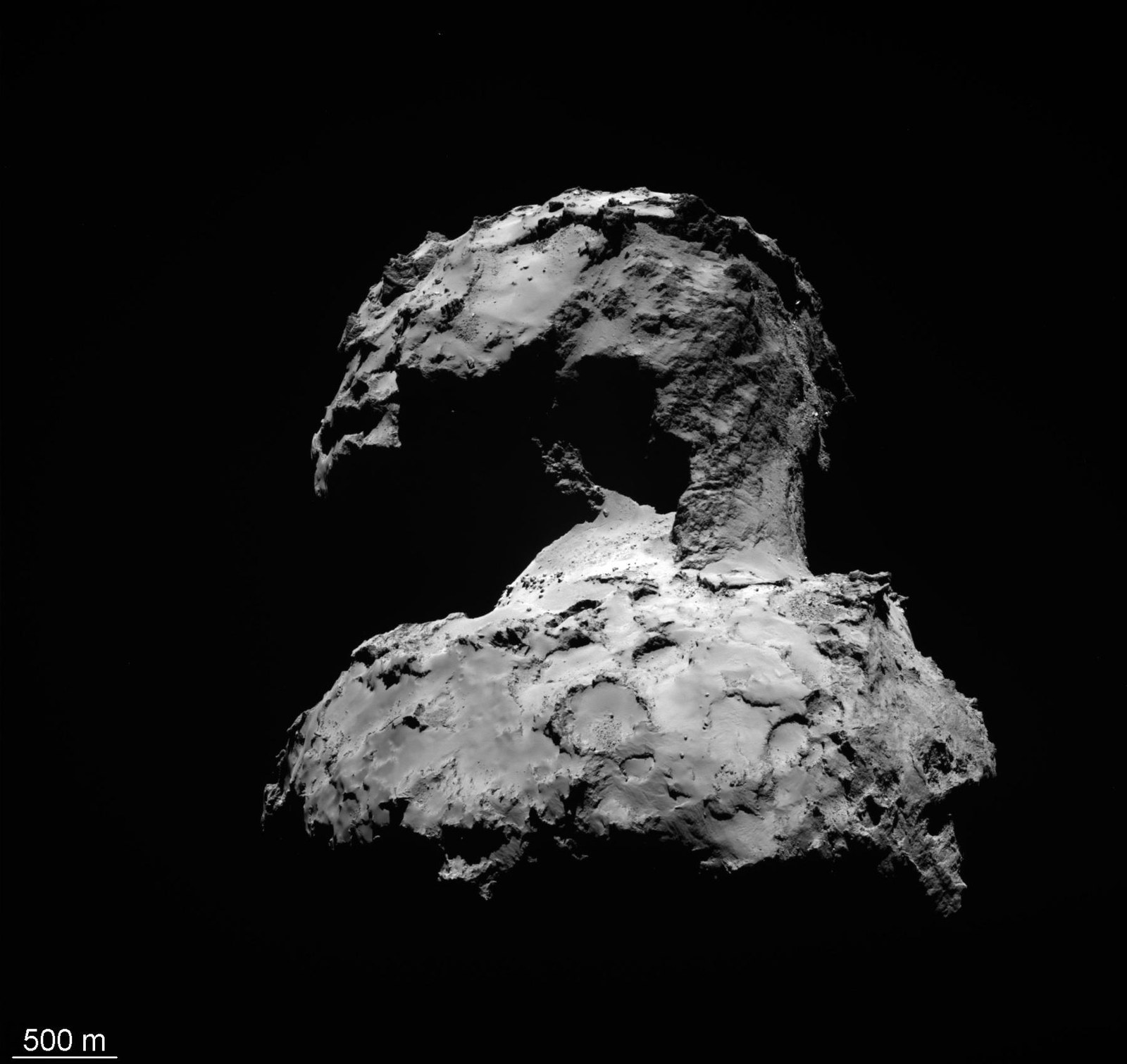Churyumov-Gerasimenko – mystery of the 'rubber duck' shape solved

ESA/Rosetta/MPS for OSIRIS Team MPS/UPD/LAM/IAA/SSO/INTA/UPM/DASP/IDA.


Shaped like a rubber duck – this was the talk upon the discovery of Comet 67P/Churyumov-Gerasimenko's surprising shape in July 2014. Scientists were amazed at the celestial body's extraordinary shape, which was revealed by the European Rosetta spacecraft. "It is most likely that two comets collided in the early Solar System, forming the double body that we see today," says Ekkehard Kührt, who heads the scientific involvement of the German Aerospace Center (Deutsches Zentrum für Luft- und Raumfahrt; DLR) in the Rosetta mission. "In order to explain the measured low density and well-preserved layer structures of both the comet's lobes, the collision must have been gentle and occurred at low speed. This finding provides important information on the physical condition of the early Solar System 4.5 billion years ago," says the comet researcher, who is co-author of a recent paper published in the scientific journal Nature.
Initially, the scientists had two theories – they suspected either a collision of two bodies or particularly intense erosion at the site that evolved into the 'neck'. Analysis of high-resolution images of the comet acquired by the Optical, Spectroscopic, and Infrared Remote Imaging System (OSIRIS) on board Rosetta between 6 August 2014 and 17 March 2015 has now provided the answer to the riddle.
One comet, two bodies
In the images, the scientists noticed more than 100 terraced structures on the comet's surface and parallel layers that were clearly visible on exposed cliffs, walls and cavities. Using a 3D model of the comet, they were then able to deduce the directionality and depth of the individual layers. It quickly became clear that although the sheet-like structures are found on both halves of the comet, they have different characteristics. This led to the conclusion that the structures did not develop on the same body. Earlier missions to comet Tempel 1 and Wild 2 had already revealed the layered, onion-like structure of these celestial bodies.
Primordial matter of the Solar System
"Comets are considered to be witnesses to the formation of our planetary system, because they have been well preserved are the remains of material formed in the cold outer regions and have been well preserved due to their small size," explains Kührt. "It was not clear to what extent collisions contributed to the aging. The data acquired by the Rosetta mission emphasises that comets were only moderately changed in this respect, and in fact display very pristine material." In addition, the similar structure of both lobes suggests that these formed in a similar manner.
Since August, Rosetta has been moving away from the Sun with the comet and will continue collecting scientific data with its 11 instruments for another year, until late September 2016.
The mission
Rosetta is an ESA mission with contributions from its member states and NASA. Rosetta's Philae lander is funded by a consortium headed by DLR, the Max Planck Institute for Solar System Research (MPS), the French Space Agency (CNES) and the Italian Space Agency (ASI).
The OSIRIS camera was developed by a consortium led by the Max Planck Institute for Solar System Research (Germany), in collaboration with the Center of Studies and Activities for Space (CISAS) at the University of Padua (Italy), the Laboratoire d'Astrophysique de Marseille (France), the Institute of Astrophysics of Andalusia (IAA-CSIC) (Spain), ESA's Scientific Support Office, the National Institute for Aerospace Technology (Instituto Nacional de Técnica Aeroespacial) (Spain), the Technical University of Madrid (Universidad Politécnica de Madrid) (Spain), the Department of Physics and Astronomy at Uppsala University (Sweden), and the Institute of Computer and Network Engineering at the Braunschweig University of Technology (Germany). OSIRIS was funded by national agencies in Germany (DLR), France (CNES), Italy (ASI), Spain (MEC) and Sweden (SNSB), as well as ESA's Technical Directorate.
